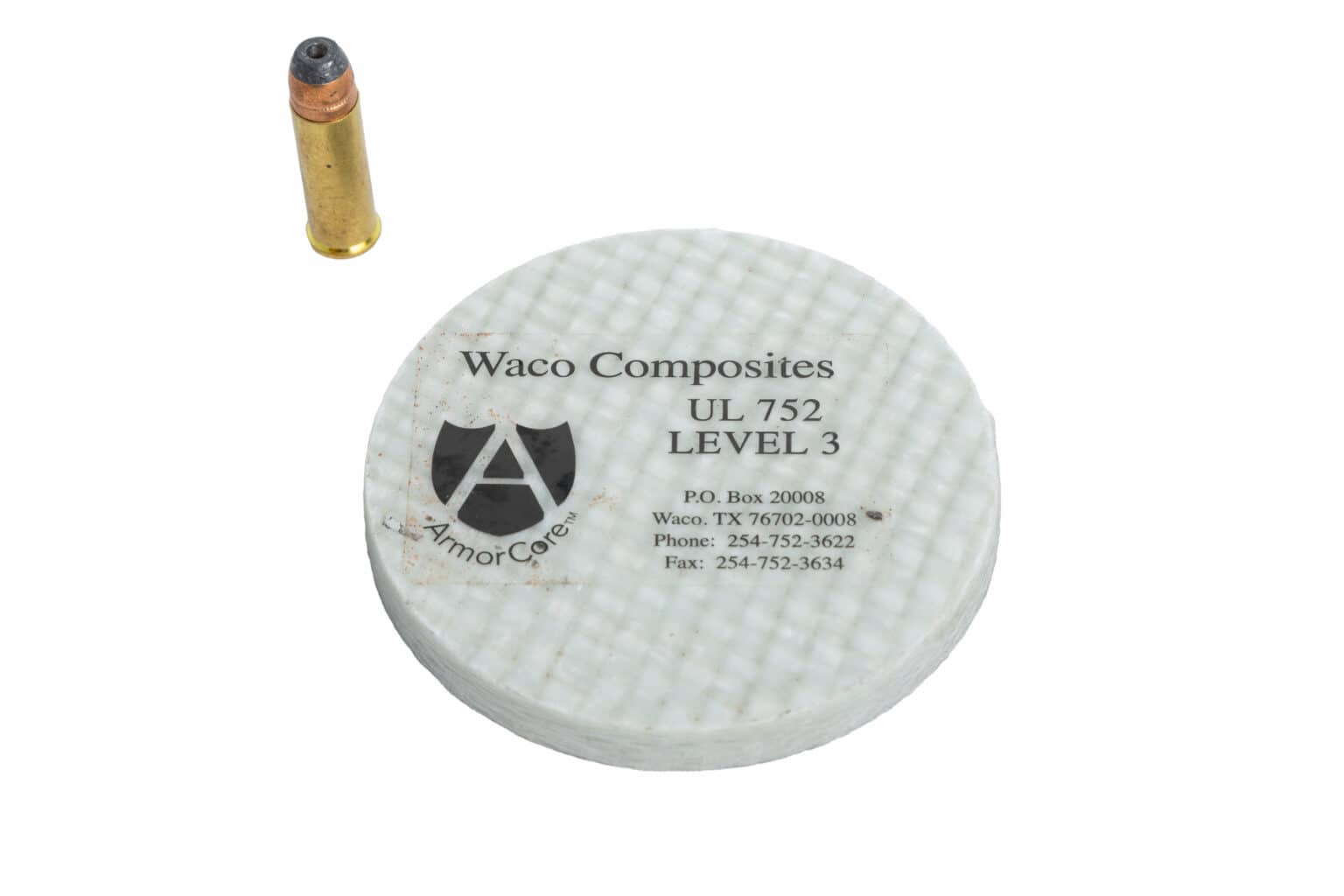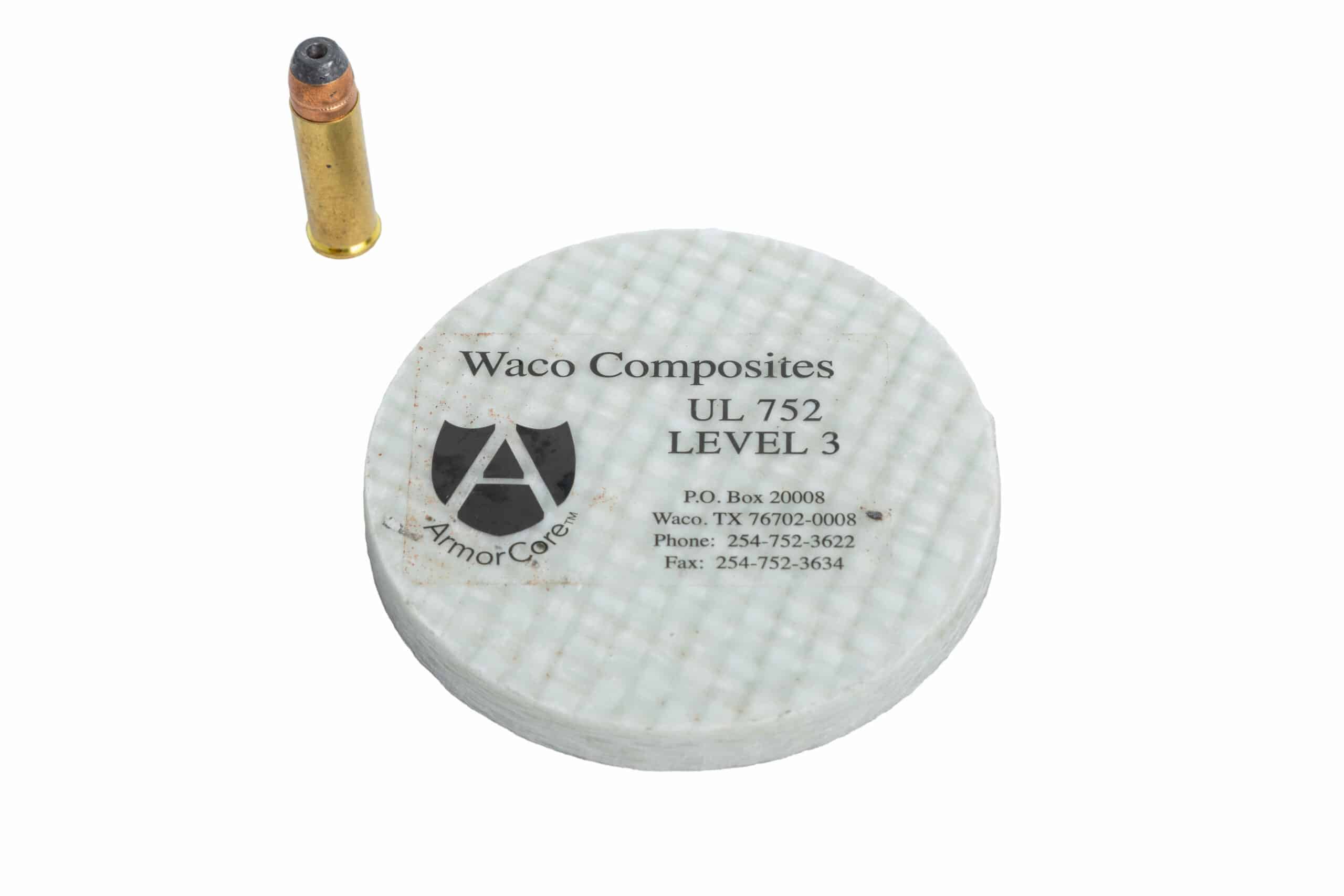Article Summary
- Learn the difference between types of ballistic rating systems and how they are tested.
- Ballistic-proofing levels for the security door you buy should match the threats you realistically expect to face.
- When purchasing a security door, check the ballistic rating and look for an independent third-party report with traceable records and facts.
Ballistic Ratings & Standards Explained: What Do Levels Mean?
When your family’s safety and security are on the line, knowing that you have professionally tested materials between yourselves and the threat provides peace of mind. Ballistic ratings are standards for firearms testing, allowing easy communication of the types of firearms threats a material can withstand before significant damage or failure. Understanding ballistic standards is essential when looking to purchase bullet resistant doors, windows, or fiberglass wall panels.
The three main categories of ballistic protection levels you’ll hear when discussing security doors and ballistic windows are:
- UL 752: the United States’ standard for bullet resistance. This standard defines the exact caliber and type of ammunition, as well as the number of rounds, shot grouping, and velocity that is used in testing.
- NIJ ballistic ratings: the National Institute of Justice’s ratings for body armor, sometimes referenced for other uses.
- EN 1522/1523: the European standard for bullet resistance, which specifies levels by projectile type and velocity.
These ratings are an important part of a door or window’s overall security, but keep in mind that many of the highest quality security improvements are additionally tested for forced entry, blast-resistance, and how well they deal with fire. In this article, we’ll focus specifically on the three most common categories of ballistic ratings, what the United States ratings in particular mean, and how you can use this knowledge to make the most informed choice for your high security needs, whether they’re residential, commercial, or government.

What Each Level Means in Practical Terms
Practically, as a consumer, you’ll want to look at the UL752 ratings of a door, wall panel, or window in one way: what type of guns and ammunition does this protect from? Not all “bulletproof doors” are truly bulletproof – different rounds of ammunition require different types of materials and construction to truly stop the threat. When considering ratings, not all are equal, either. Material rated for a higher level does not necessarily mean it will provide absolute protection from guns of a lower level. As part of a strong overall security strategy, ballistic-proof doors and windows are a key component, but they should not be the single solution to your family’s safety.
UL752 Level 3 Ballistic Rating
UL 752 Levels 1 through 3 rated materials stop firearms from the handgun category. They range from the least to the most powerful calibers, such as 9mm, .357 Magnum, and .44 Magnum. These smaller firearms are common and used to damage the integrity of doors and windows. We at Shield Security Doors offer both bulletproof doors and bulletproof panels rated to the UL752 Level 3 standard. This level is often recommended for homeowners looking for ballistic projection as well as retail stores and low-risk community buildings.
- Often used in residential properties in high-traffic or high-crime areas to help deter and prevent potential break-ins and vandalism.
- Many small businesses, offices, and reception areas implement Level 3 doors and windows to provide a practical balance of protection and daily use.


UL752 Level 8 Ballistic Rating
UL752 Level 8 materials are rated to stop firearms that are rifles, specifically stopping 7.62mm rifle rounds. This serious firepower can cause significant damage to the average door or wall. As with Level 3, we offer UL752 Level 8 bulletproof panels and doors. This level rating is intended for high-threat environments, from private property to commercial venues and government buildings.
- Used by embassies, consulates, and other government facilities to protect against threats ranging from small arms to rifles.
- High-value properties, both residential and commercial, implement Level 8 rated doors where necessary to protect against rifle, sniper, and sustained gunfire. This includes panic rooms, secure storage and vaults, and high-risk vehicle loading bays.
One key takeaway from the discussion of Level 3 vs. Level 8 is to match your protection to the realistic level of threats you’ll receive. The common myth that a thicker door is always stronger does not always hold true – the installation, internal structure, and materials used in a door are far more important to its overall strength. Another thing to keep in mind is the difference of ballistic vs forced entry protection, as one type of protection does not guarantee protection from another. In many ways, forced entry protection is the most important criteria; a door that can stop the strongest bullets doesn’t do any good if it can be pried open in moments with a crowbar.
Practical Guidance for Ballistic Proof Door Buyers
When looking to purchase your own Shield bulletproof door, you’ll want to be on the lookout for several key factors. First, look for the test standard used and the level clearly indicated. For most building materials, you’ll be looking for a UL752 Level rating. From there, confirm that the laboratory that issued the rating is a professional, independent facility—the certificate should include ample information about the tests conducted. Ensure that each part of your security door is certified and tested – a high-quality security door certified to a certain level rating means little with a non-rated doorframe or faulty hardware.
Common “Bulletproof” Buying Red Flags
As discussed earlier, not all bullet resistant doors and windows are created equal. No matter why you need a bulletproof door – from securing a gun room to keeping your family’s peace of mind – you want to know that when you pay for quality, you’re receiving quality. When buying, be on the lookout for these red flags when researching your options:
- Vague, unsupported claims
- Claims of “thicker equals stronger” without evidence and context
- Lack of third-party test reports with complete traceable records
- Certificates and ratings that only cover specific parts rather than the entire assembled door

On the other hand, here’s a “green flag” checklist to help you feel more prepared when making your decision to buy. If your research into a security door manufacturer leads you to confident answers for these categories, you can make your final decision based on all the data you need:
- Warranty
- Certification
- Material source
- Testing data
- Maintenance required
- Company responsiveness
Finding Ballistic Ratings Balance
Overall, just like every threat is different, so too are the levels of ballistic protection. When seeking peace of mind in a family residential setting, your needs for ballistic-proof doors and Shield ballistic panels are vastly different than those of a business owner or government decision-maker. When you need answers to your questions about ballistic protection and anything you could ask about security doors, reach out to our experts at Shield Security Door. We’re happy to answer any and all questions you may have about the safety and security of our products, as well as how they stack up against the standards, and how our products are independently tested. Our team is ready to help you make an informed choice on how to take the next step for your security today.

